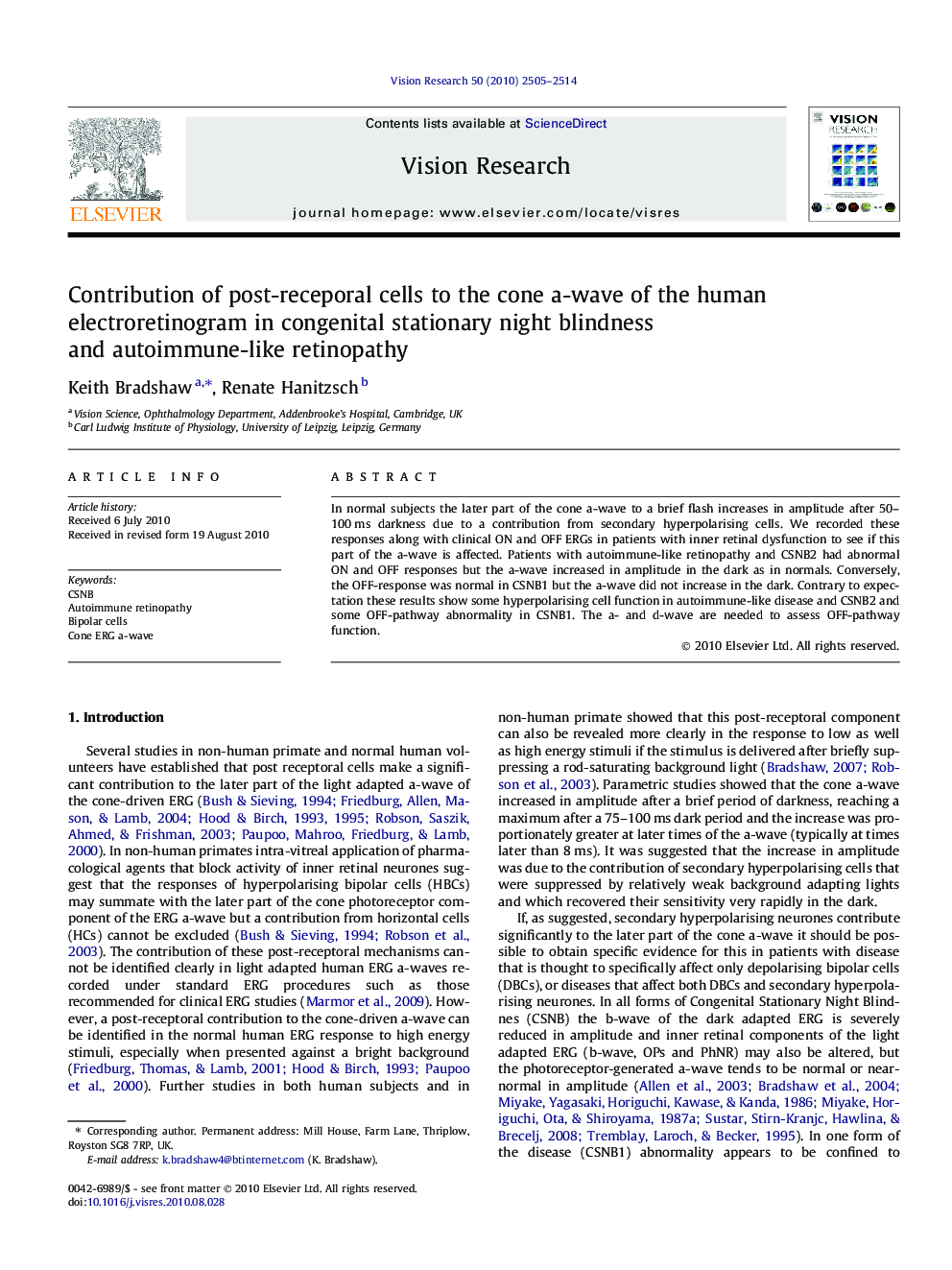| Article ID | Journal | Published Year | Pages | File Type |
|---|---|---|---|---|
| 6203817 | Vision Research | 2010 | 10 Pages |
In normal subjects the later part of the cone a-wave to a brief flash increases in amplitude after 50-100Â ms darkness due to a contribution from secondary hyperpolarising cells. We recorded these responses along with clinical ON and OFF ERGs in patients with inner retinal dysfunction to see if this part of the a-wave is affected. Patients with autoimmune-like retinopathy and CSNB2 had abnormal ON and OFF responses but the a-wave increased in amplitude in the dark as in normals. Conversely, the OFF-response was normal in CSNB1 but the a-wave did not increase in the dark. Contrary to expectation these results show some hyperpolarising cell function in autoimmune-like disease and CSNB2 and some OFF-pathway abnormality in CSNB1. The a- and d-wave are needed to assess OFF-pathway function.
Research highlights⺠Clinical ON/OFF ERG and cone a-wave after 0-300 ms dark in autoimmune-like disease (AI), CSNB1 and CSNB2.⺠Cone a-wave increased after 50-100 ms dark in normal due to secondary hyperpolarising cell response.⺠A-wave increase in the dark in AI and CSNB2 indicates preserved OFF-pathway function at light ON.⺠A-wave did not increase in the dark in CSNB1 giving new evidence for impaired OFF-pathway.⺠Dissociation between a- and d-waves shows that both are needed to assess OFF-pathway function.
